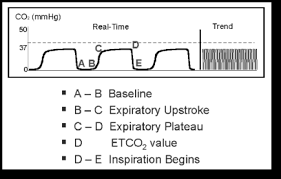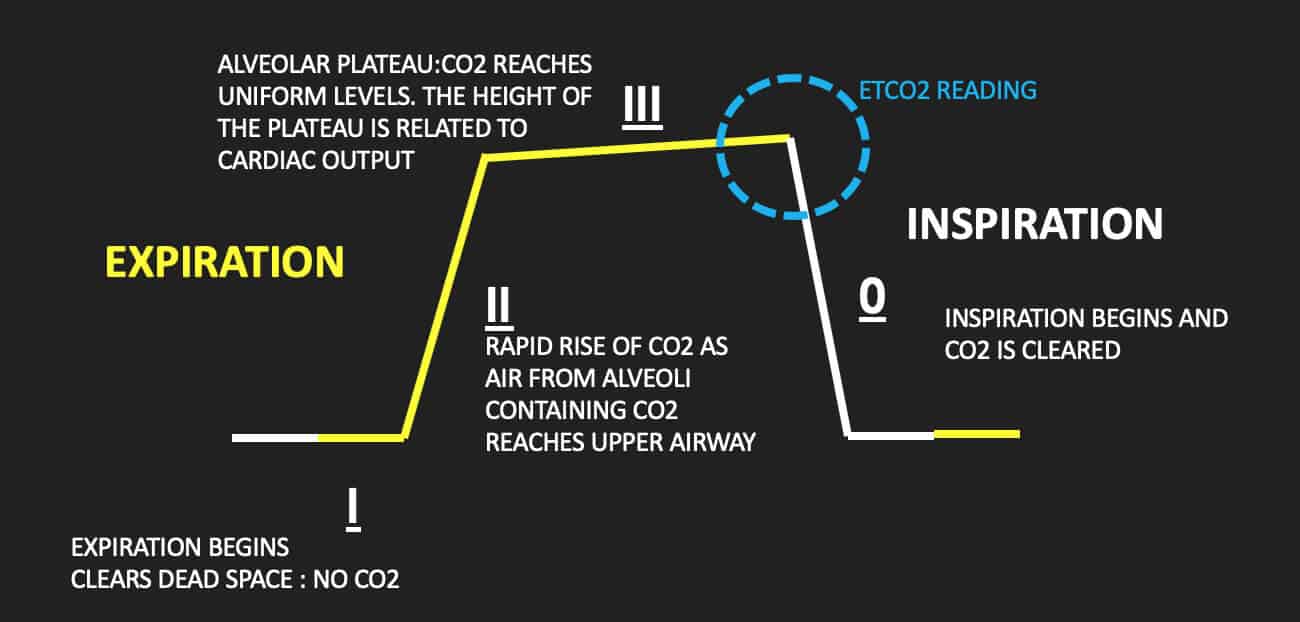normal end tidal co2 range
Capnography can be used to assess unresponsive patients ranging from those are actively seizing to victims of chemical terrorism. It can be used in a wide range of settings from prehospital settings to emergency departments and procedural areas.
End-tidal CO2 EtCO2 monitoring is a noninvasive technique which measures the partial pressure or maximal concentration of carbon dioxide CO2 at the end of an exhaled breath which is expressed as a percentage of CO2 or mmHg.

. End tidal CO 2 monitoring is represented as a number and a graph on a monitor. End-tidal capnography or end-tidal CO2 EtCO2 monitoring is a non-invasive technique that measures the partial pressure or maximal concentration of carbon dioxide CO2 at the end of an exhaled breath. The number is called capnometry which is the partial pressure of CO 2 detected at the end of exhalation ranging between 35 - 45 mm Hg or 40 57 kPa.
End-tidal CO2 EtCO2 monitoring is a noninvasive technique which measures the partial pressure or maximal concentration of carbon dioxide CO2 at the end of an exhaled breath which is expressed as a percentage of CO2 or mmHg. As stated before end tidal is slightly different. In patients with normal pulmonary function CO 2 normally 35 to 45 mm Hg and ETco 2 should correlate closely with a deviation of about 2 to 5 mm Hg.
Waveform capnography represents the amount of carbon dioxide CO2 in exhaled air which assesses ventilation. 2 to near normal normal EtCO 2 35-45 mmHg represents marked increase of CO 2 delivery to lungs suggesting ROSC If patient develops an organized rhythm after VFVTasystole check EtCO 2 to see if ROSC has occurred CONFIRM PLACEMENT OF ETT After intubation if ETCO 2 10mm Hg tube in trachea. The waveform is called capnograph and shows how much CO 2 is present at each phase of the respiratory.
Norm al EtCO2 levels 46 to 60 kPa signify adequate perfusion. Normal ETCO2 is in the range of 35 to 45 mmHg. Utility of end-tidal carbon dioxide detector during stabilization and transport of critically ill children.
In conditions of normal breathing 6 Lmin 12 breathsmin 500 ml for tidal volume etCO 2 is very close to alveolar CO2. The plateau observed at the end of the. All reports to physicians respiratory therapy or RRT must be documented in the EMR.
The number is capnometry which is the partial pressure of CO2 detected at the end of exhalation. 6 hours after continuous epidural infusion is discontinued c. 2 See Figure 1 p.
End-tidal CO 2 et CO 2 monitoring is not a new modality in the pediatric emergency department PED and emergency department. The normal values are 5 to 6 CO2 which is equivalent to 35-45 mmHg. Understanding End Tidal CO 2 Monitoring.
The normal end-tidal capnography wave form is basically a rounded rectangle. Per moderate sedation monitoring policy. 35-40 mm Hg PETCO2 less than 10 indicates ineffective chest compressions.
Just so what is the end tidal co2. End-tidal Carbon dioxide during shock may predict massive transfusion. Median time from arrival to ETCO2 measurement was 4 min.
The normal values are 5 to 6 CO2 which is equivalent to 35-45 mmHg. Since problems with lungs are not common and gas exchange between alveoli and the blood is swift and effective alveolar CO 2 reflects arterial CO 2. Once that has been done you can use an end tidal Co2 monitor as opposed to drawing multiple ABGs.
21 Hillier SC Badgwell JM Mcleod ME Creighton RE Lerman J. ETC02 monitoring may be discontinued when. Mean arterial PCO2 levels were 43241473 and mean ETCO2 levels were 34231086 mmHg.
The Normal Capnograph Waveform Deranged Physiology End Tidal Carbon Dioxide Recording Of Ventilated Children In Picu N 535 Download Scientific Diagram Waveform Capnography In The Intubated Patient Emcrit Project. Low end tidal co2 range Wednesday February 23 2022 Edit. Continuous Waveform Capnograpy is written as PETCO2 which stands for patient end-tidal carbon dioxide.
This is end-tidal CO2 ETCO2 which is normally 35-45 mm Hg. When a person is breathing in it. The normal range of 35 to 45mmHg.
According to the book by Hockenberry and Wilson 2015 p 1140 normal values of ETCO2 are 30-43 mmHg which is slightly lower than arterial PaCO2 35-45mmHg. 78 Nitrogen 21 Oxygen 1 CO2 and other gases Exhaled gases. So the short answer is you are right about the ranges 35-45 but that is for actual PaCo2 drawn from an ABG.
Total pressure of a gas is the sum of the partial pressures of the gas Expired CO2 measured PetCO2 mmHg in waveform Percentage Normal Levels PaO2 85-100mmHg PaCO2 35-45mmHg Percentage vs. S Thompson A. MmHg Relate to the air we breath.
It consists of a number and a graph. Waveform and end -tidal carbon dioxide EtCO2 values. A total of 955 patients underwent initial in-hospital ETCO2 measurement.
IV narcotics discontinued d. The normal values are 5. Repiratory rate AND depth tidal volume which determine minute ventilation and therefore arterial CO2.
Accuracy of end-tidal PCO2 measurements using a sidestream capnometer in infants and children ventilated with the Sechrist infant ventilator. End-tidal carbon dioxide ETco 2. It is best to get an ABG along side the end tidal to calculate the patients shunt.
The presence of a normal waveform denotes a patent airway and spontaneous breathing. Measuring End Tidal CO2 Daltons Law. 48 When a person is breathing out CO 2 the graph goes up.
What is the normal range for petco2. PCA pump is discontinued b. Capnograms in infants and children can have the following format under normal circumstances due to faster respiratory rates smaller tidal volumes and relatively longer response time of capnographs dispersion of gases in side-stream capnographs.
Agreement between PCO2 and ETCO2 measurements was 84 mmHg and a precision of 111 mmHgAs there is only a moderate correlation between PCO2 and ETCO2 levels in COPD patients ETCO2 measurement should not be considered as a part of the decision-making process to. Normal minute ventilation about 200 mlkgmin for dogs and cats in conscious animals with normal lungs results in an arterial and therefore alveolar CO 2 partial pressure of 35 to 45 mm Hg. Carbon dioxide is produced in the body as a by-product of metabolism and is eliminated by exhaling.
Capnography measures the amount of CO2 present at the end of exhalation end-tidal CO2 or ETCO2 displays a waveform that represents air movement through the. Among admitted patients N 493 489 had low ETCO2Compared to patients with normal ETCO2 those with low ETCO2 were older median age 53 vs 46 p 001 and more likely to have the highest trauma activation.

Capnography Provides Bigger Physiological Picture To Maximize Patient Care Jems Ems Emergency Medical Services Training Paramedic Emt News
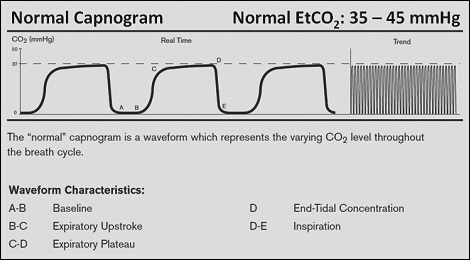
Capnogram R Series Defibrillator Zoll Medical Uk
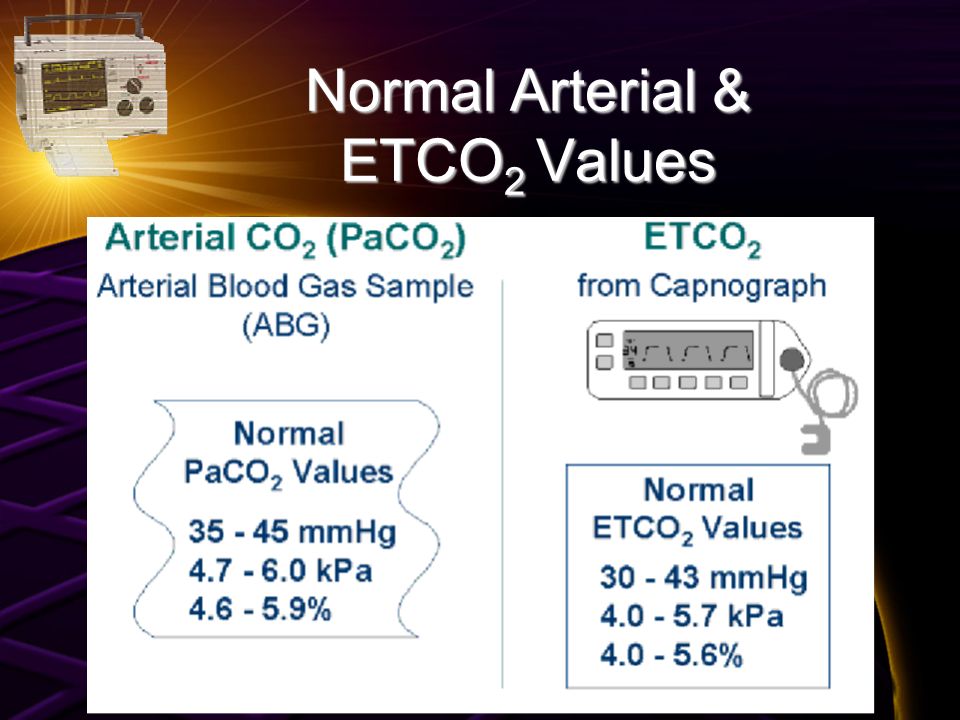
Capnography And Pulse Oximetry The Standard Of Respiratory Care Ppt Video Online Download

Pdf Capnography In The Pediatric Emergency Department Clinical Applications Semantic Scholar

End Tidal Carbon Dioxide Tension Pet Co 2 In Normal Individuals Over Download Table
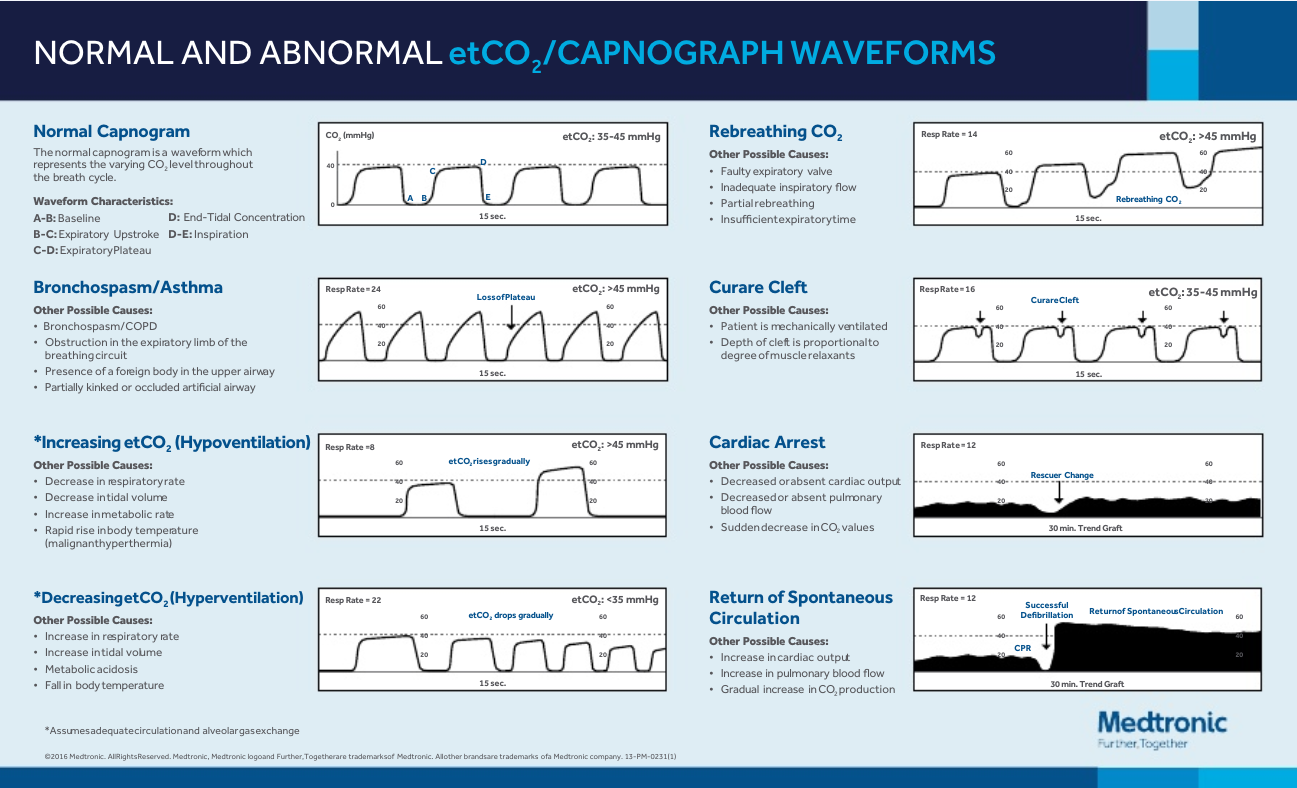
Normal And Abnormal Capnography Waveforms Infographic Capnoacademy Capnoacademy
Emdocs Net Emergency Medicine Educationcapnography In The Ed Emdocs Net Emergency Medicine Education

Exhaled Carbon Monoxide End Tidal Co2 And Peripheral Oxygen Saturation Download Table

End Tidal Co2 Monitoring In The Pre Hospital Environment More Than Just Endotracheal Tube Placement Confirmation Journal Of Paramedic Practice

End Tidal Carbon Dioxide Recording Of Ventilated Children In Picu N 535 Download Scientific Diagram

Average Etco2 Kpa During Cpr In Patients With Or Without Rosc Download Scientific Diagram

End Tidal Capnography Can Be Useful For Detecting Diabetic Ketoacidosis Monitoring Copd Acep Now

Waveform Capnography In The Intubated Patient Emcrit Project

Basic Capnography Interpretation Nuem Blog

Waveform Capnography In The Intubated Patient Emcrit Project

Exhaled Carbon Monoxide End Tidal Co2 And Peripheral Oxygen Saturation Download Table
The Normal Capnograph Waveform Deranged Physiology

Waveform Capnography In The Intubated Patient Emcrit Project
